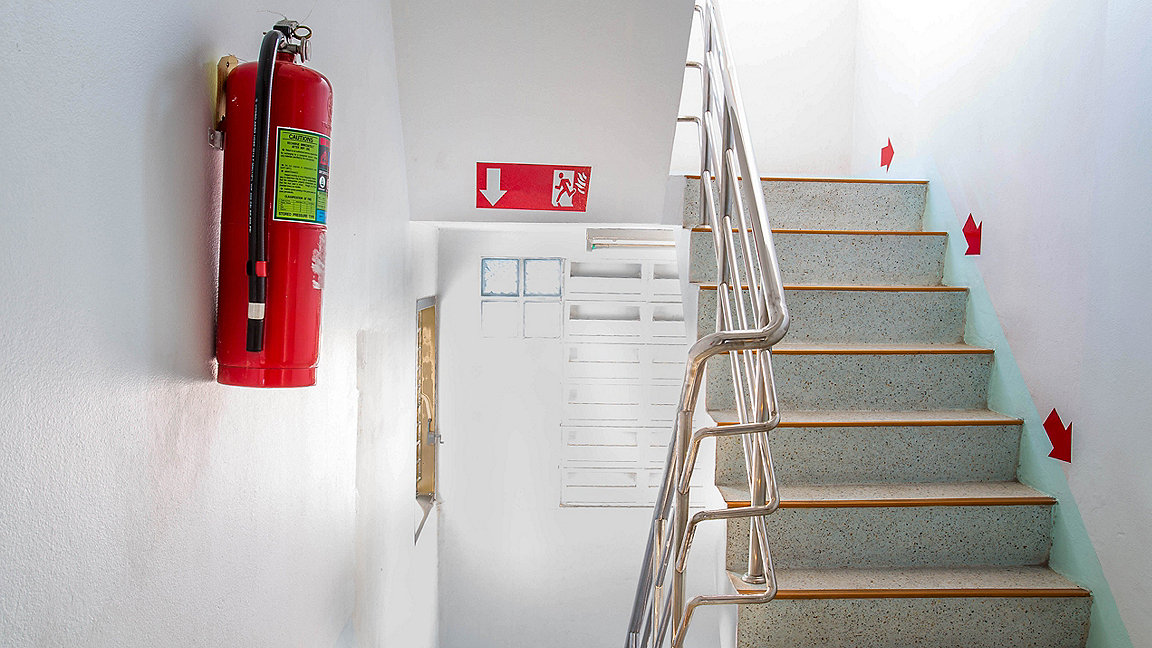
At one time, the UK government used regular spring and autumn time slots to review and amend each part of the Building Regulations or related guidance. This practice seems to have fallen by the wayside, though, and now it simply reacts to policy, events or other legislation in making changes.
All existing buildings are subject to the regulations that applied at the time they were approved, so we must be careful not just to use the current versions, as is perhaps justified in determining 'what is safe'. This approach by designers, fire risk assessors and building control must be carefully applied and understood. The principle is that, when carrying out a fire risk assessment, one has to bear in mind current regulations, standards and guidance as best practice.
Distinguishing regulations and guidance
The key issue is the difference between regulations and guidance. In England for instance, since the Grenfell Tower fire in June 2017, the Fire Safety (England) Regulations have only changed once – in December 2018 – although further changes take effect in December this year.
The two volumes of Approved Document B, however, have changed six times in the past five years. A further complication is that, you don't have to use the approved documents when inspecting buildings and they are not law but guidance. You could, for instance, use BS 9991:2015 Fire safety in the design, management and use of residential buildings. Code of practice instead, which has not been changed since 2015, though an amended version is proposed for later this year.
Having worked with both English and Welsh governments in creating and changing regulations and guidance, I have found it a challenging process. Back in 1985 we moved from regulating everything in law – which was prescription-based – to functional law – which was performance-based – with supporting guidance.
This was to allow more flexibility and professional judgement and to prevent pedantic application of the law. It also helped reduce the demand on government in the requirement to give determinations when designs did not comply with the law but were, in practical terms, still a safe design. This new guidance developed the principle that this is one option that may be used; note the word may – this permitted the designer to choose the design code or guidance.
Any current changes therefore must be viewed in context of the functional law. This is often a broad and open statement – Building Regulation B1, for example – states that the building must have in place 'appropriate provisions for the early warning of fire, and appropriate means of escape in case of fire'.
There is no need to change this statement. It works. The guidance is the problem. What is considered to be 'appropriate'. This is created by government in the form of approved documents on the general and basic level of design expected to meet that functional requirement. This guidance, being far more complex and detailed, on what is required to achieve compliance however, is not as robust.
Sometimes, there are mistakes in or omissions from the approved document; sometimes, poor interpretations cause problems. There is often confusion about what text means as well. In fact, every approved document contains a clause confirming that it's not a guaranteed pass if you use the guidance, but that it only 'tends to show compliance'.
Is it better to change law or guidance?
Approved documents are flexible, optional and do not always ensure a safe building. One way of making a tougher, mandatory change is to change the law. In 2018, Building Regulation 7 was amended to ban certain cladding in some buildings taller than 18m. It was a clear message that the law, not the guidance, was the vehicle for change, given the extreme consequences of the use of aluminium composite material cladding at Grenfell Tower.
Likewise, during my work with the Building Regulations Advisory Committee in Wales, all the changes to the approved documents recommending sprinklers in every new home meant nothing until we also changed the regulations to mandate this. No twisting or interpretation of the guidance documents or fire engineering options could then be used to avoid having to install such systems.
On the other hand, altering the regulations needs an Act of Parliament. This is an extensive legal and political process that takes a lot of time. In contrast, approved documents can be changed almost immediately, and the secretary of state only has to advise certain bodies of the change.
Indeed, the latest changes to Approved Document B – due to take effect in December – were announced in advance on 1 June. Similarly, typos can be corrected, references to British Standards updated and other edits to the document made without troubling parliament.
Which, then, is the better option? To introduce new requirements or prevent misinterpretations, the law is stronger. When it comes to detail, however, technical material in guidance documents can be changed more quickly and efficiently. The one problem with this is that approved documents are not the only source of guidance, so it’s not possible to make comprehensive changes.
With any change there are generally a few documents that can be of particular use: the statutory instrument that introduces regulation, or a statement of change in government guidance, such as a new approved document:
-
the letter to local authorities, approved inspectors and other bodies advising of changes, which outlines the changes and explains when they apply
-
the cost–benefit analysis, which describes what is being changed and gives more detail on the implications
-
the government circular that explains what laws are repealed, the extent of application, and the transitional arrangements.
Other reference sites include:
-
The government site for the English approved documents, which also holds some historical versions, and the year-by-year list of the instructions, guidance, advisory notes and changes in England.
-
The site related to government legislation where the laws in all the four home nations can be accessed.
-
The site related to parliamentary bills where the progress of proposed legislation in England can be tracked before they become acts.
-
The site related to the new building safety regulator in England that is now responsible for Building Regulations, and in time is expected to take over the approved documents from the Department for Levelling Up, Housing and Communities.
-
The site which lists Wales' own building regulations and approved documents.
-
The site which covers building standards for Scotland; there are no approved documents there, as the functional regulation and guidance approach to buildings control is not permitted.
-
The site which covers information, guidance and law on the Northern Irish system.
Anyone using these laws and guides must check specifically on the relevant websites above to ensure they obtain up-to-date and accurate information.
A need for prescriptive legislation and general guides
So, what's best? In reality the construction world needs both. Prescriptive legislation and general guides. It's too complex a field to have only one of these. What's lacking is the background, principles and supporting analysis to say for instance why 18m height is a critical figure (in the guidance – not law). Why is 18m travel distance a safe figure?
We all need to ensure we have a professional judgement that can be defended and proven to be accurate. Designers, assessors and building control officers need to make a judgement on the level of safety required.
Sometimes the information is there in the regulatory impact assessments, supporting documents, but on Approved Document B it is lacking. And historically – going back to CP3 in the 1960s – fire safety guidance has often simply tweaked or improved on what we did before. This is not – I would suggest – good enough in the current climate.
'The construction world needs both prescriptive legisation and general guides'
Andrew Thomas MRICS is a principal building control officer at Fylde Borough Council and member of the RICS Fire Safety Working Group
Contact Andrew: Email
Related competencies include: Fire safety, Legal/regulatory compliance

